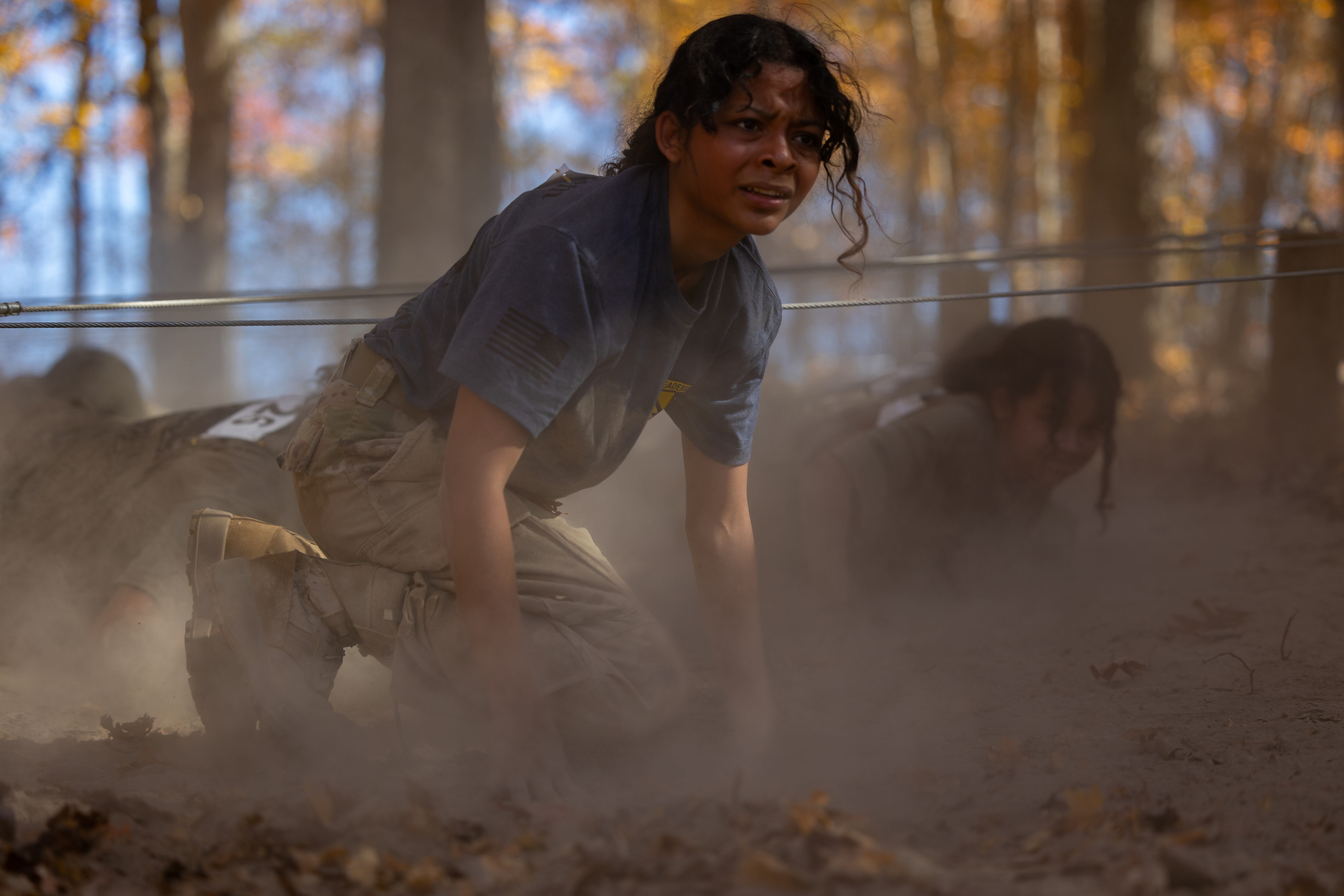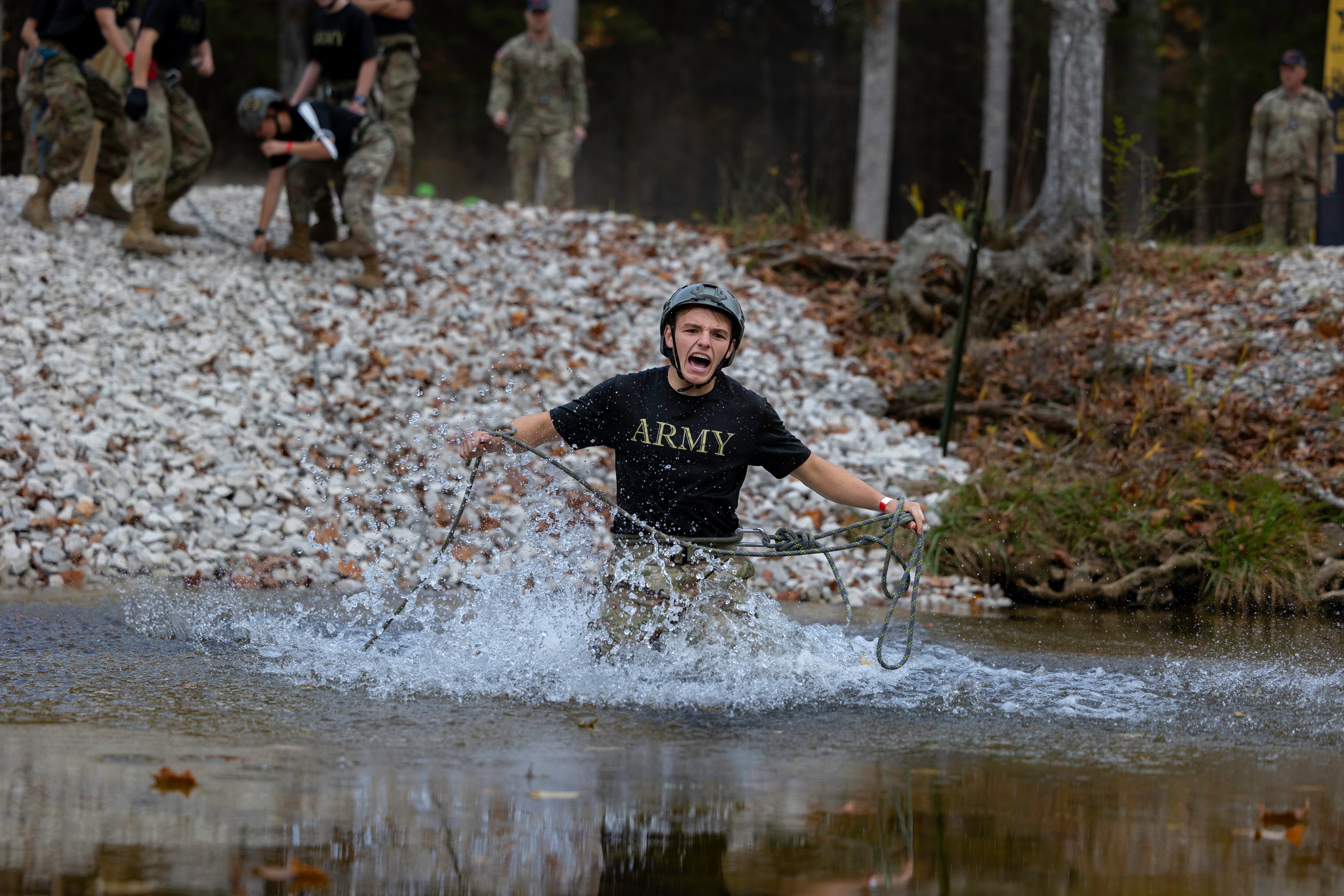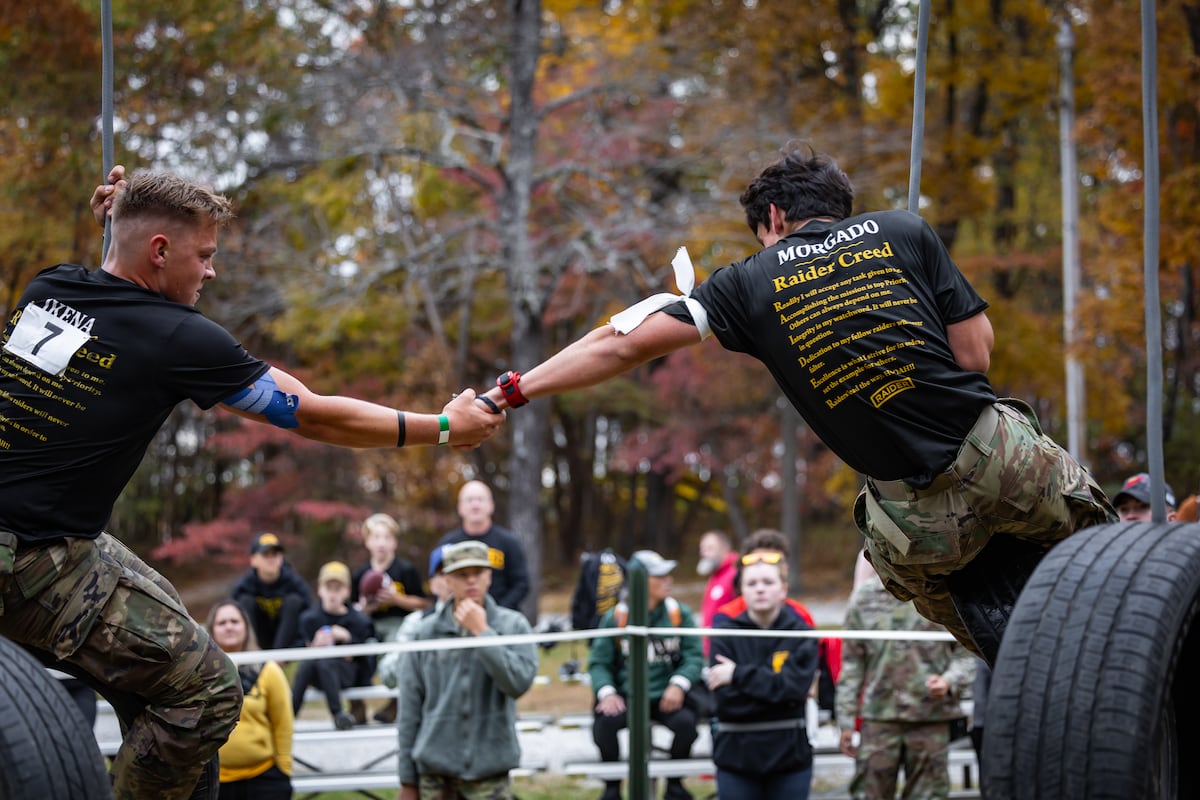As the Army recalibrates its recruiting efforts, one long-standing program holds the potential to attract new recruits and educate the civilian public about the military: Junior Reserve Officer Training.
The Army Cadet Command, which oversees both JROTC and ROTC, has spent recent years promoting JROTC across the nation through new technical skills training and various events.
Those new skills, large public events and a push by Congress to expand the program in the coming years are all measures to modernize JROTC and expose more of the population to bolster military recruiting while also bridging the civilian-military divide.
RELATED
One such event, the Raider Challenge, took place in late October. Held for the second time at Fort Knox, Kentucky, home of Army Cadet Command, the challenge includes various physical fitness and leadership events such as a 5-kilometer run, rope bridge assembly and a 3-mile buddy team obstacle course.
More than 4,000 cadets from across the country arrived at the post to compete in a series of events.
The annual event was previously held in Molena, Georgia, where approximately 3,000 cadets participated in the final event there, officials said.
The Fort Knox site gives cadets a chance to see an actual military installation and meet soldiers in units serving now, Ian Ives, Army Cadet Command spokesman, told Army Times.
One cadet who spoke with Army Times recently attended the Raider Challenge at both locations, having participated in the event all four years of his high school career.

“I have met some people who don’t understand the purpose. They think it’s more an Army thing,” said Cadet Maj. Jeremiah Purvis, a senior at Kansas’ Leavenworth High School. “It’s really about helping cadets be better leaders in the community.”
Purvis is the last of four brothers in his household to participate in JROTC. His father is an Army veteran, and his oldest brother is an Army second lieutenant.
Established in 1917, the Leavenworth program is one of the nation’s oldest JROTC programs. This year the school took home top place in both the male and female division team competitions.
Julie Howell, the mother of Cadet 1st Lt. Elisabeth Howell, participated in JROTC when she was in high school. At the time, the program didn’t have the more modern tech skill classes and clubs of today’s JROTC programs.
Those types of classes and clubs help draw in students who might not have considered JROTC and allow them to learn more about the program from fellow cadets, Howell said.
“It’s a phenomenal opportunity for these kids to evolve into who they are,” Howell said.
Flashy ads, posters or social media campaigns might be what’s needed to grab the attention of the prospective young recruits the Army wants to reach, but for JROTC, another cadet might be best.
Cadet Kaitlyn Spaulding, a freshman at Leavenworth, met Elisabeth Howell at a local swimming pool and learned that Howell had been on the school’s female JROTC national championship team.
That inspired her to give JROTC a shot, she told Army Times.
“I remember seeing their uniforms and thinking ‘I want to wear those uniforms, too,’” Spaulding said. “I want to be in the program.”
She’s set her sights on attending the U.S. Military Academy at West Point.
In the fiscal 2021 defense budget, Congress called for doubling the number of JROTC sites across the military branches by 2031.
Military representatives, experts and several studies have shown that the presence of a JROTC program at a school improves civilian-military cooperation, can influence students at the school to join the military and results in higher graduation rates, more successful enlistments for those who do join after high school.
Army JROTC currently has 1,744 programs with an estimated 280,000 cadets, Ives told Army Times. That’s an increase from a decade ago when there were 1,709 programs with 246,500 cadets.
Doubling the number of programs over the next six years would bring that figure to 3,488 for the Army alone.

A significant increase in the number of Army JROTC programs isn’t unprecedented, though past growth has occurred over a longer timeline. The Army tripled its JROTC programs between 1992 and 2022, according to a RAND report released in September.
The Army ordered the report to study expanding the geographic footprint of the Army’s JROTC programs across the country.
Researchers found that the Army programs were overrepresented in the Southeast region of the United States and underrepresented in the Northwest, Midwest and in rural areas in all regions.
About 6% of public high schools had an Army JROTC program overall. That ranged from 12% of high schools across the South to 3% of high schools in the Northeast and West and only 2% of high schools in the Midwest, according to the report.
RAND personnel conducted a simulation in which they replaced the 60 lowest performing schools with Army JROTC programs with 60 innovative programs in underserved areas. They found no meaningful change in participation.
But should the Army add another 1,000 JROTC programs, the service would see a noticeable increase in its geographic diversity, according to the report.
The report authors recommended the Army continue highlighting its novel JROTC programs such as the Cyber Program. Army Cadet Command has increased its clubs and offerings in technology including cybersecurity, drone and 3D printing in recent years, Ives said.
The RAND report identified prospects by state and by prioritized cities and regions in rank order based on their sustainability. The federal law that governs JROTC programs defines a program as sustainable if it has at least 100 participants or at least 10% of the student body.
Todd South has written about crime, courts, government and the military for multiple publications since 2004 and was named a 2014 Pulitzer finalist for a co-written project on witness intimidation. Todd is a Marine veteran of the Iraq War.
Read the full article here
